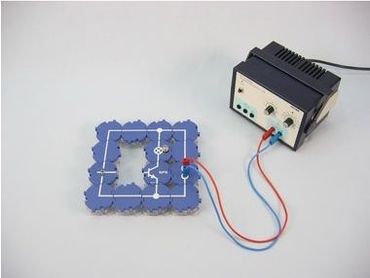
Technical data The NPN transistorArticle no: P1374200  Principle This experiment should impart the knowledge, that a collector current only flows through a transistor when the correct polarity of the collector voltage is chosen and a base voltage of correct polarity is applied. For an npn transistor, both the collector and base must be connected to the positive pole. The emitter is here in each case the reference electrode. Prior to carrying out the experiment, the students should be familiarised with the designations of transistor electrodes, as well as the meaning of the term npn transistor. The comparison of the base current, which can be estimated from the size of the base resistance and the applied voltage, with the collector current, which causes the lamp to light up, also leads to the conclusion that a minimal base current is sufficient to make the transistor conductive. Benefits
Tasks With which voltage is an npn transistor to be operated? Examine which polarity the collector voltage and the base voltage of an npn transistor must have for a collector current to flow. Scope of delivery
| ||||||||||||||||||||||||||||||||||||
Robert-Bosch-Breite 10 – 37079 Göttingen – Germany
www.phywe.com

